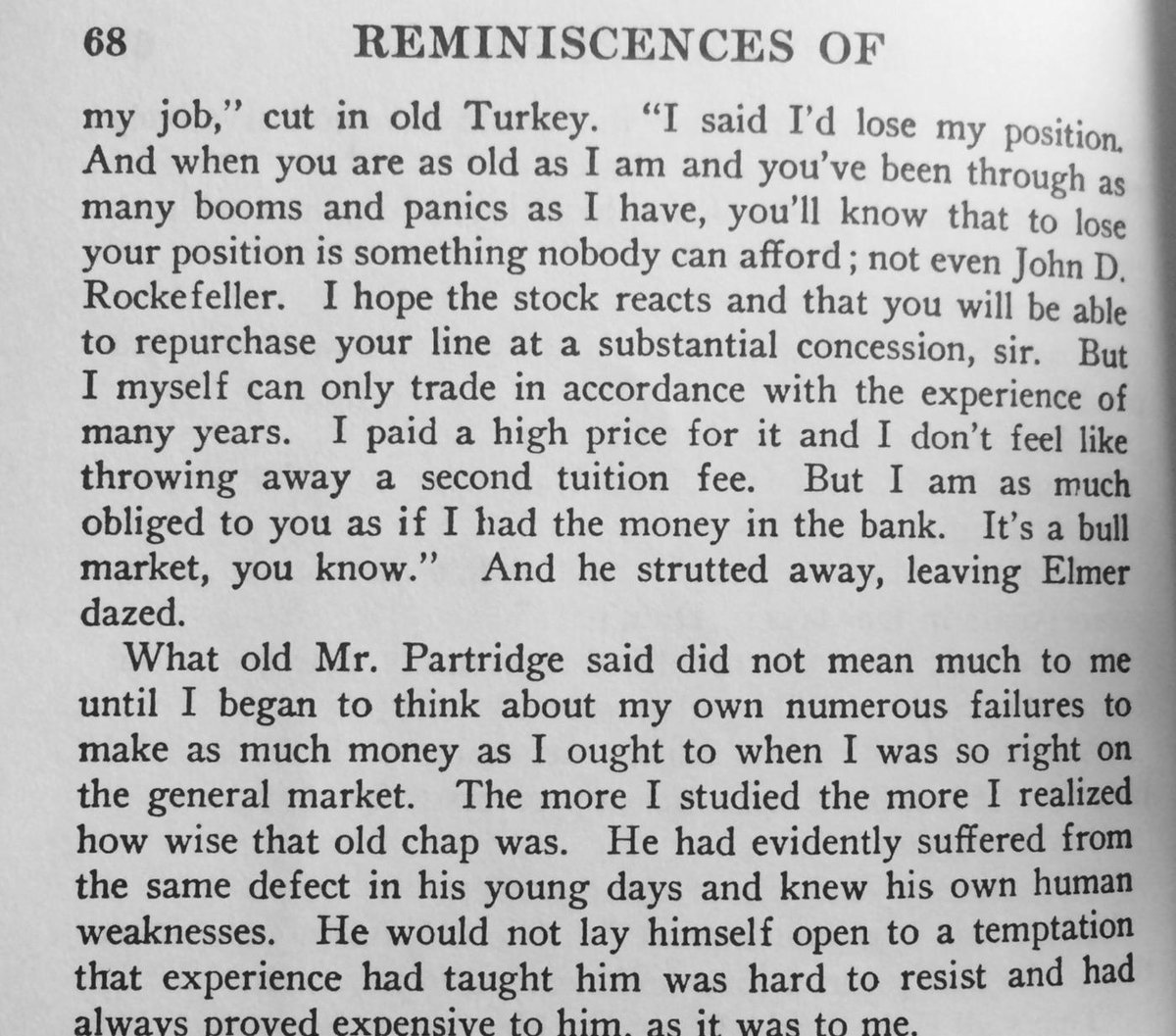 Your biggest enemy, when trading, is within yourself. Success will only come when you learn to control your emotions. Edwin Lefevre’s
Your biggest enemy, when trading, is within yourself. Success will only come when you learn to control your emotions. Edwin Lefevre’s
Reminiscences of a Stock Operator (1923) offers advice that still applies today.
Caution
Excitement (and fear of missing an opportunity) often persuade us to enter the market before it is safe to do so. After a down-trend a number of rallies may fail before one eventually carries through. Likewise, the emotional high of a profitable trade may blind us to signs that the trend is reversing.
Patience
Wait for the right market conditions before trading. There are times when it is wise to stay out of the market and observe from the sidelines.
Conviction
Have the courage of your convictions: Take steps to protect your profits when you see that a trend is weakening, but sit tight and don’t let fear of losing part of your profit cloud your judgment. There is a good chance that the trend will resume its upward climb.
Detachment
Concentrate on the technical aspects rather than on the money. If your trades are technically correct, the profits will follow.
Stay emotionally detached from the market. Avoid getting caught up in the short-term excitement. Screen-watching is a tell-tale sign: if you continually check prices or stare at charts for hours it is a sign that you are unsure of your strategy and are likely to suffer losses.
Focus
Focus on the longer time frames and do not try to catch every short-term fluctuation. The most profitable trades are in catching the large trends.
Expect the unexpected
Investing involves dealing with probabilities ? not certainties. No one can predict the market correctly every time. Avoid gamblers? logic.
Average up – not down
If you increase your position when price goes against you, you are liable to compound your losses. When price starts to move it is likely to continue in that direction. Rather increase your exposure when the market proves you right and moves in your favor.
Limit your losses
Use stop-losses to protect your funds. When the stop loss is triggered, act immediately – don’t hesitate.
The biggest mistake you can make is to hold on to falling stocks, hoping for a recovery. Falling stocks have a habit of declining way below what you expected them to. Eventually you are forced to sell, decimating your capital.
Human nature being what it is, most traders and investors ignore these rules when they first start out. It can be an expensive lesson.
Control your emotions and avoid being swept along with the crowd. Make consistent decisions based on sound technical analysis.


 About a month or so ago, I finally got around to reading Marty Schwartz’s classic,
About a month or so ago, I finally got around to reading Marty Schwartz’s classic,  By far the most useful advice by Livermore in Reminiscences of a Stock Operator was to avoid tips like the plague. Similarly, Bacon warned:
By far the most useful advice by Livermore in Reminiscences of a Stock Operator was to avoid tips like the plague. Similarly, Bacon warned:
 Waiting for the right opportunity increases the probability of success. You don’t always have to be in the market. As Edwin Lefevre put it in his classic Reminiscences of a Stock Operator, “There is the plain fool who does the wrong thing at all times anywhere, but there is the Wall Street fool who thinks he must trade all the time.”
Waiting for the right opportunity increases the probability of success. You don’t always have to be in the market. As Edwin Lefevre put it in his classic Reminiscences of a Stock Operator, “There is the plain fool who does the wrong thing at all times anywhere, but there is the Wall Street fool who thinks he must trade all the time.” Graham and Dodd’s Definition of Speculation
Graham and Dodd’s Definition of Speculation